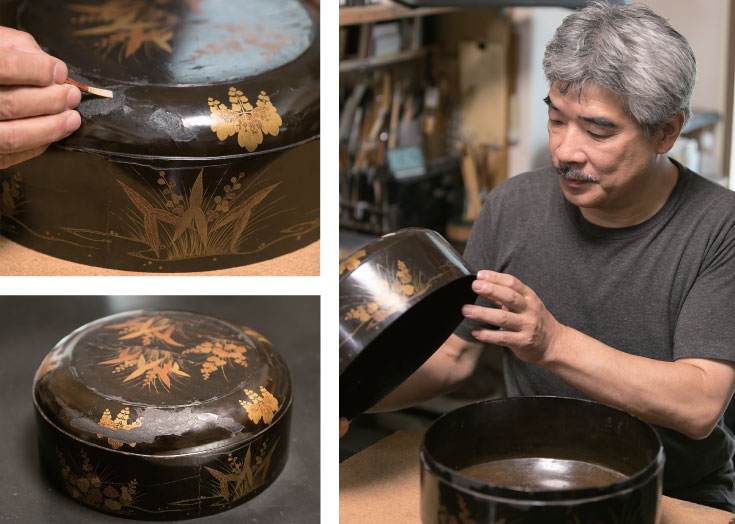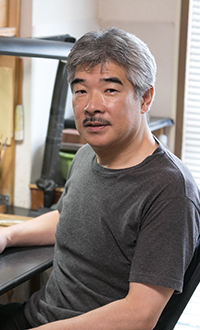niponica is a web magazine that introduces modern Japan to people all over the world.
2019 NO.25
Japan’s Decorative Art of Urushi

The Japanese Spirit Has Been Inherited - Urushi Restorers
Restoration of Cultural Property -
Handing On the Cultural and Technical Baton to the Next Generation
Matsumoto Tatsuya
Urushi artist
A full member of the Japan Kogei Association, Matsumoto works at restoring urushi cultural properties. He is also involved in the Rescue Programme for Cultural Properties.
Restoration of cultural properties differs from that for everyday items. A major point of difference is that one does not “over-restore” the item, or “touch it too much.”
"For everyday items, you restore and re-coat depending on how bad the damage is but, in restoring a cultural property, you need to preserve its current condition, which includes leaving the damage itself," says Matsumoto Tatsuya, an urushi artist who has been restoring cultural property for 25 years. That’s because the damage is evidence of the passage of time. Matsumoto looks at how much the urushi has degraded and carries out only the degree of restoration work that he considers necessary "at present" - otherwise, he leaves the work to the next generation of restorers.
If a property has sustained more severe damage due to a natural disaster such as an earthquake, then a chemical analysis team is brought in to enable the restoration work to be conducted based on more detailed data. In such a case, the most important thing is mutual understanding among people from different fields.
"Of course technique and know-how are required in restoration work, but we can also learn a variety of information from damaged sections to be recorded for posterity; and, it is important to decide whether or not appropriate restoration is carried out."
It is necessary to clarify the background to the work's creation and the context in which the pattern was drawn, and to use your imagination, and then to select the best restoration technique at that point. Consequently, it takes several decades to develop highly skilled human resources. Often, the necessary skills are acquired through experience in on-site restorations. "It takes a lot of skill to handle urushi so we urgently need to set up training establishments for developing human resources - as we must pass on this culture,” Matsumoto says passionately. At present the restoration of cultural property is carried out in individual facilities and workshops, which means that the number of restorations available per year is limited. To protect the precious culture of urushi, Matsumoto wishes it to be increased, even by one.
Decorative artwork of urushi encompasses the culture and techniques of the past. Matsumoto is working to restore cultural property so that they can be handed down from the past to the present and on to the future.

Left: Maki-e from Kodai-ji temple under restoration and flakey urushi coating on an object being repaired in the workshop. Using a spatula, an urushi base is applied to the part that is flaking and then any irregularities are smoothed out.
Right: Carefully scrutinizing the state of the damage makes the base structure visible. Restoring cultural properties offers a unique opportunity to observe the sophisticated techniques used by our predecessors - techniques that usually coated with urushi.
Photograph: Kanai Gen





